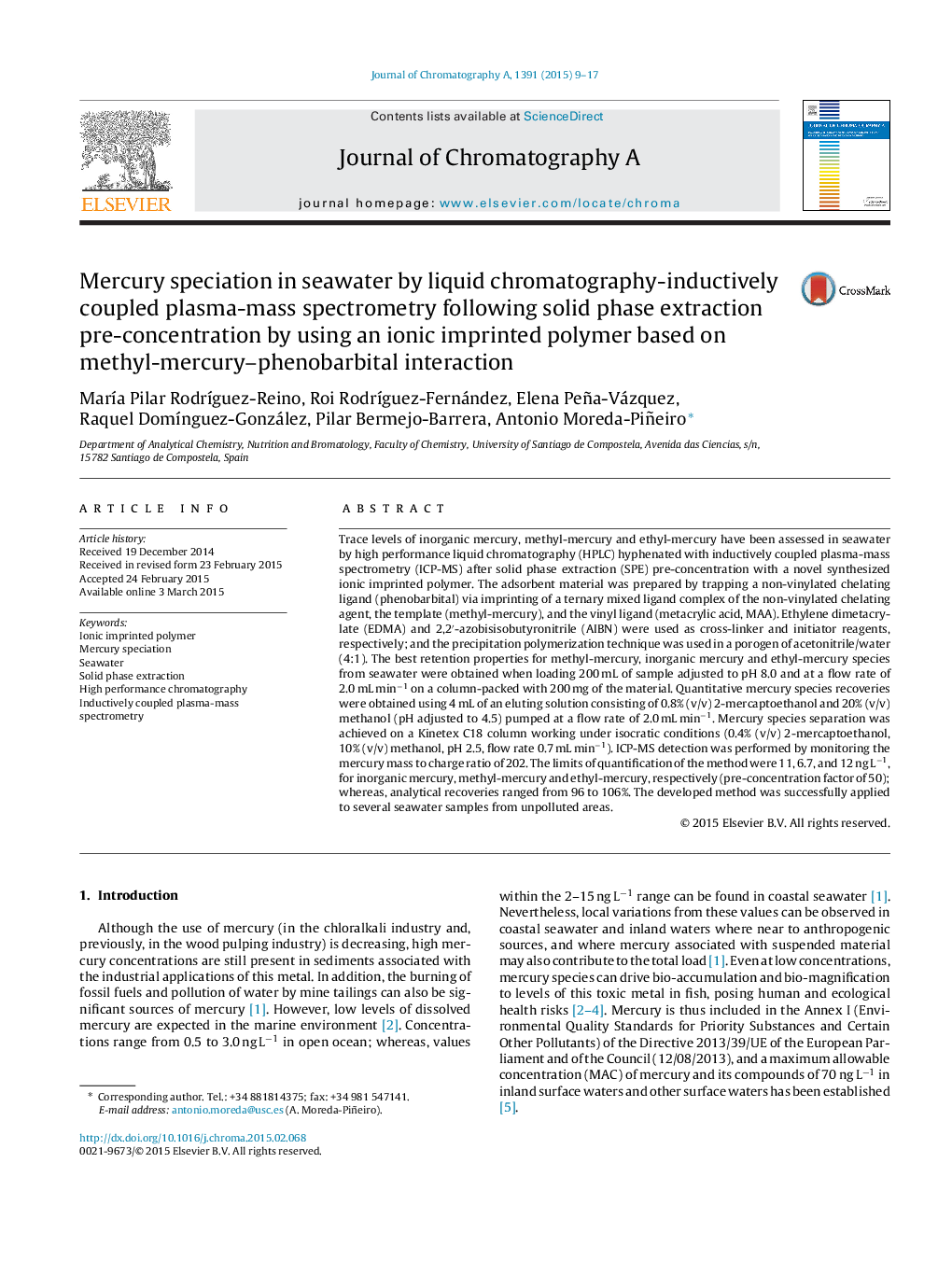| کد مقاله | کد نشریه | سال انتشار | مقاله انگلیسی | نسخه تمام متن |
|---|---|---|---|---|
| 1201657 | 1493535 | 2015 | 9 صفحه PDF | دانلود رایگان |
• Synthesis of an ionic imprinted polymer based on methyl-mercury–phenobarbital interactions.
• Fast mercury species separation by using reverse phase columns of new design.
• Limit of quantification lower than the maximum allowable concentration (MAC) established for mercury and its compounds.
• Inorganic mercury, methyl-mercury and ethyl-mercury were assessed in seawater.
Trace levels of inorganic mercury, methyl-mercury and ethyl-mercury have been assessed in seawater by high performance liquid chromatography (HPLC) hyphenated with inductively coupled plasma-mass spectrometry (ICP-MS) after solid phase extraction (SPE) pre-concentration with a novel synthesized ionic imprinted polymer. The adsorbent material was prepared by trapping a non-vinylated chelating ligand (phenobarbital) via imprinting of a ternary mixed ligand complex of the non-vinylated chelating agent, the template (methyl-mercury), and the vinyl ligand (metacrylic acid, MAA). Ethylene dimetacrylate (EDMA) and 2,2′-azobisisobutyronitrile (AIBN) were used as cross-linker and initiator reagents, respectively; and the precipitation polymerization technique was used in a porogen of acetonitrile/water (4:1). The best retention properties for methyl-mercury, inorganic mercury and ethyl-mercury species from seawater were obtained when loading 200 mL of sample adjusted to pH 8.0 and at a flow rate of 2.0 mL min−1 on a column-packed with 200 mg of the material. Quantitative mercury species recoveries were obtained using 4 mL of an eluting solution consisting of 0.8% (v/v) 2-mercaptoethanol and 20% (v/v) methanol (pH adjusted to 4.5) pumped at a flow rate of 2.0 mL min−1. Mercury species separation was achieved on a Kinetex C18 column working under isocratic conditions (0.4% (v/v) 2-mercaptoethanol, 10% (v/v) methanol, pH 2.5, flow rate 0.7 mL min−1). ICP-MS detection was performed by monitoring the mercury mass to charge ratio of 202. The limits of quantification of the method were 11, 6.7, and 12 ng L−1, for inorganic mercury, methyl-mercury and ethyl-mercury, respectively (pre-concentration factor of 50); whereas, analytical recoveries ranged from 96 to 106%. The developed method was successfully applied to several seawater samples from unpolluted areas.
Journal: Journal of Chromatography A - Volume 1391, 24 April 2015, Pages 9–17
